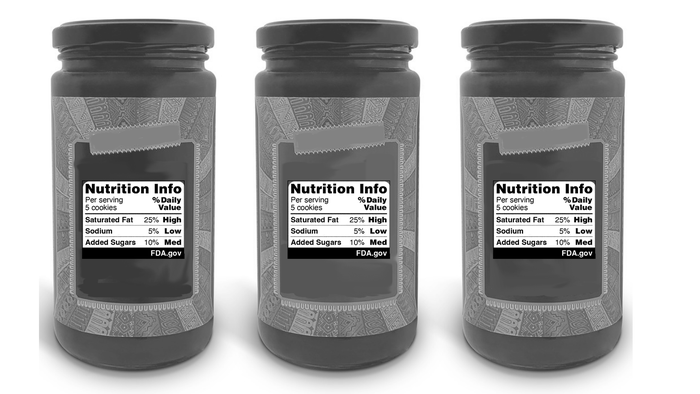At a Glance
- FDA plans to reduce sodium in processed foods through front-of-pack labeling and updated voluntary reduction targets.
- Sodium perception is complex and reducing it affects other flavors and food properties, making it difficult for developers.
- Developers must optimize formulas, explore alternatives like potassium salts and balance sensory expectations.
The FDA is targeting sodium reduction in processed foods through two initiatives. Front-of-packaging labeling will require sodium, saturated fat, added sugar and calories to be plainly visible. The format is still being finalized. Similarly, phase two of the voluntary sodium reduction goals is in development.
Interested stakeholders can comment on the proposed packaging rule through May 16.
High sodium intake is in focus because, according to the Centers for Disease Control and Prevention, “Eating too much sodium can increase your risk for heart disease and stroke. Together, heart disease and stroke kill more Americans than any other cause.” According to American Heart Association, 75% of Americans want less sodium in processed and restaurant foods.
Unfortunately, reducing sodium is tricky for food developers. Ha Nguyen, Ph.D., postdoctoral research fellow at Monell Chemical Senses Center, explained that salt perception is complicated. Scientists understand sweet, sour and bitter tastes, so it’s easier to replicate those perceptions. Two taste receptors perceive sweetness, T1R2 and T1R3. A family of cells are identified for sour tastes. There are more than 25 bitter taste receptors. Scientists don’t know yet how many pathways are involved with sodium. In part, salt is perceived through sodium channels, but that’s only a piece of the picture.
Nguyen explained that if the mechanism of sodium perception is not understood, then it’s hard to replicate or improve that perception. Once understood, then other sodium substitutes can be identified. Or enhancers for that perception process can be utilized.
“Researchers are still working to understand sodium taste perception,” she said. The good news is that scientists at Monell have identified a receptor that hasn’t been identified before, but she said more work is needed to confirm this.
To be, or not to be (salty)
While understanding the science behind sodium perception is important, so is recognizing the affect sodium has on other flavors. For example, Nguyen said that if salt is reduced, bitter becomes dominant. Saltiness and umami perception are correlated. With an increase in sour notes, salt can be reduced.
Even if scientists and food developers perfect their knowledge so that sodium can be reduced or replaced with healthier alternatives, that’s only half the battle. “Consumers differ in their sensory perception,” Nguyen said. “Everyone lives in their own sensory world. It may be too salty for this consumer, but not salty enough for many other consumers. So that’s why it’s hard to satisfy everyone. I think it’s different across individuals, across cultures, across regions and across people of different diets. It's built from their experience and their diet.”

Front-of-packaging labeling will require sodium, saturated fat, added sugar and calories to be plainly visible.
Challenges to reducing salt in foods
From a food development perspective, she pointed out that it’s easier to reduce sodium in simple rather than complex products. In processed meats or ham, she noted, it’s more difficult to reduce sodium than in canned vegetables.
Janice Johnson, food technical advisor at Cargill, explained the difficulty of reducing sodium in prepared meals because of the many food components that make up the meal: “In a frozen pizza, for example, sodium is present in each component: the dough, cheese, sauce and meat. While the target may be a pizza with a 30% reduction in sodium, you can’t just make the same adjustment across the board. Instead, developers must optimize the sodium content for each food element and may choose to use multiple tools to achieve desired reductions. Oftentimes, this requires working with multiple suppliers, as brands likely source components like cheese and other pizza toppings from different vendors.”
Then there’s the functional role that sodium plays in food, such as the way it impacts texture. Take white bread, for example. “Too large of a salt reduction in these products leads to larger sized air cells, more tender crumb and less flavor—all attributes that deviate from traditional sensory expectations,” Johnson said. “To a large degree, every food category has a limit on sodium reduction. Push past that line and the sensorial attributes will be negatively impacted from a consumer perspective.”
Where to begin
Cargill encourages product developers to begin the sodium reduction process by reviewing the formula, identifying all the ingredients that contribute sodium and determining their functional role in the finished product. “In addition to salt, preservatives and chemical leavening agents are other common sources of sodium,” Johnson explained. “It may be possible to achieve some sodium reduction simply by reducing the amount of salt in a formula. This approach might result in a 5% to 10% sodium reduction, depending on the initial sodium content of the food. However, higher reduction levels, without adding other ingredients, may compromise things like shelf life and consumer sensory expectations.”
For deeper cuts, she recommends product developers look to alternative options, such as salts with a different shape or particle size or a potassium salt. “While the amount of sodium reduction will vary based on application, switching to Alberger salt, with its unique crystalline structure, can allow brands to reduce sodium in a sauce application by up to 20%,” Johnson said. “In addition, because Alberger labels as salt, no changes are needed to ingredient statements.”
This piece originally appeared on SupplySide Food & Beverage Journal, a New Hope Network sister website. Visit the site for information on ingredients, product development and regulatory issues.
About the Author
You May Also Like







